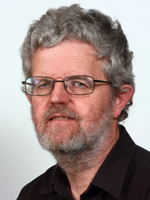Guest lectures and seminars - Page 29
QOMBINE seminar talk by David Jaklitsch (Hamburg)
Ingeborg Gjerde (Simula Research Laboratory) presents joint work with Ridgway Scott (University of Chicago).
Abstract: Airflow around airplane wings is characterized by a wide range of flow scales, making it highly challenging to capture numerically. From a simulation viewpoint, the following questions are still being actively investigated: Why do airplanes fly? Can one reliably simulate the lift and drag of an airplane wing? In this talk, I will provide no good answers to these questions. Instead, I want to talk about some interesting results I've stumbled into tangentially, including:
- (Nonlinear) kinetic energy instability analysis, also referred to as Reynolds-Orr instability
- Slip boundary conditions and their connection to D'Alembert's paradox
- Stokes' paradox and its connection to weighted Sobolev spaces. I will show numerical results computed for flow around a cylinder, which serves as a proxy for flow around an airplane wing. In particular, I will talk about the impact of the friction boundary condition on the drag force and flow stability. Finally, I will comment on how these results might be interpreted in view of: New Theory of Flight, J. Hoffman, J. Jansson, C. Johnson (2016), Journal of Mathematical Fluid Mechanics.

